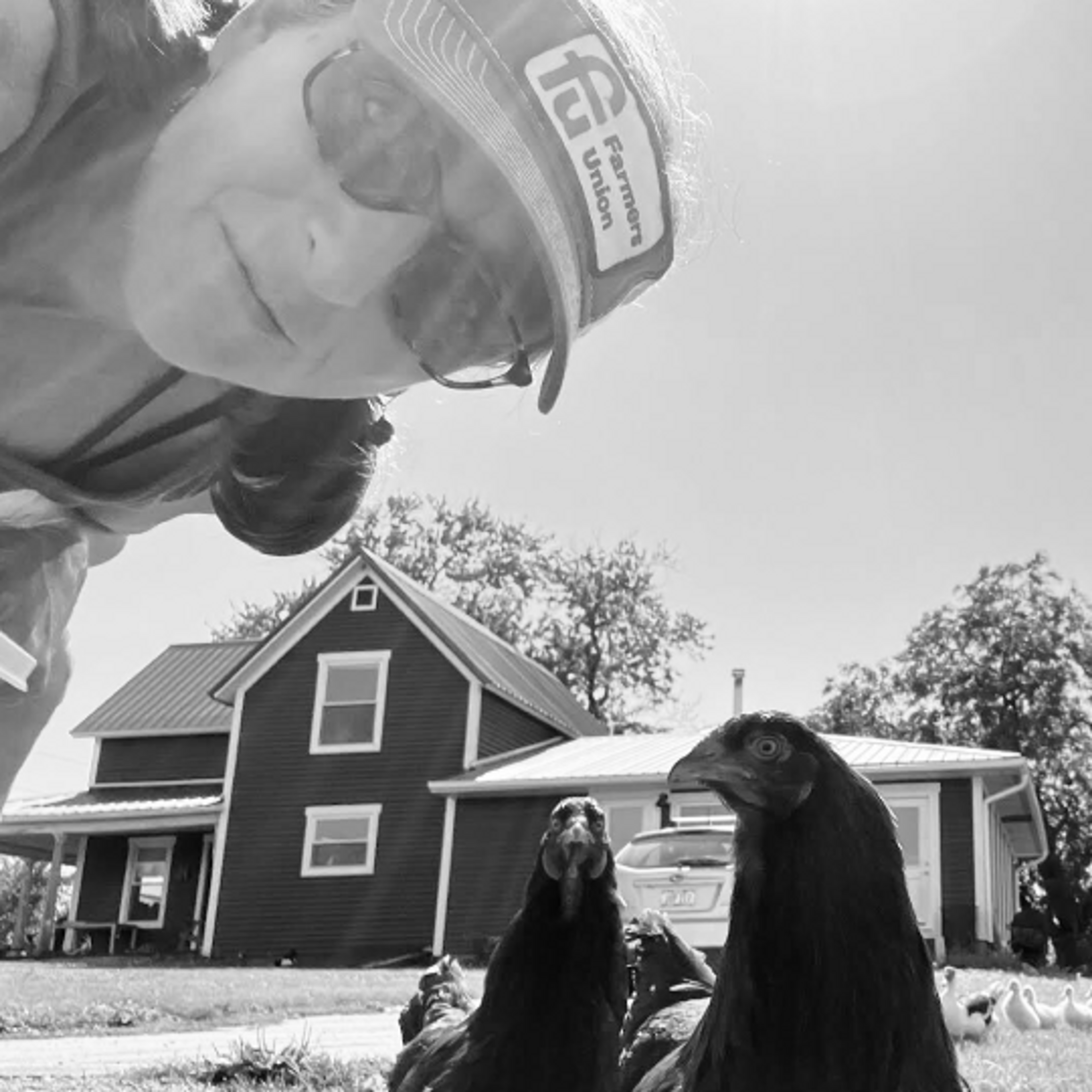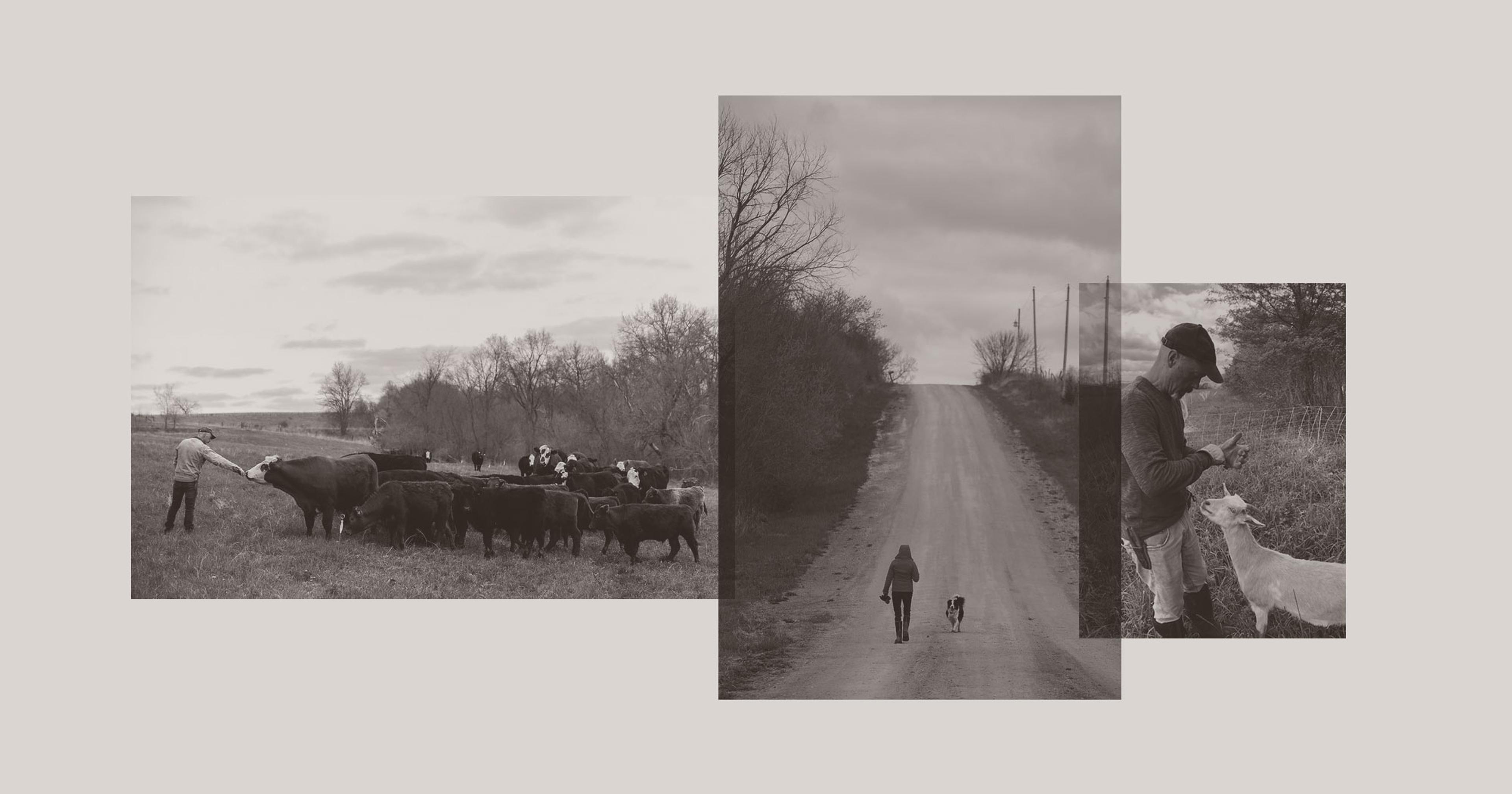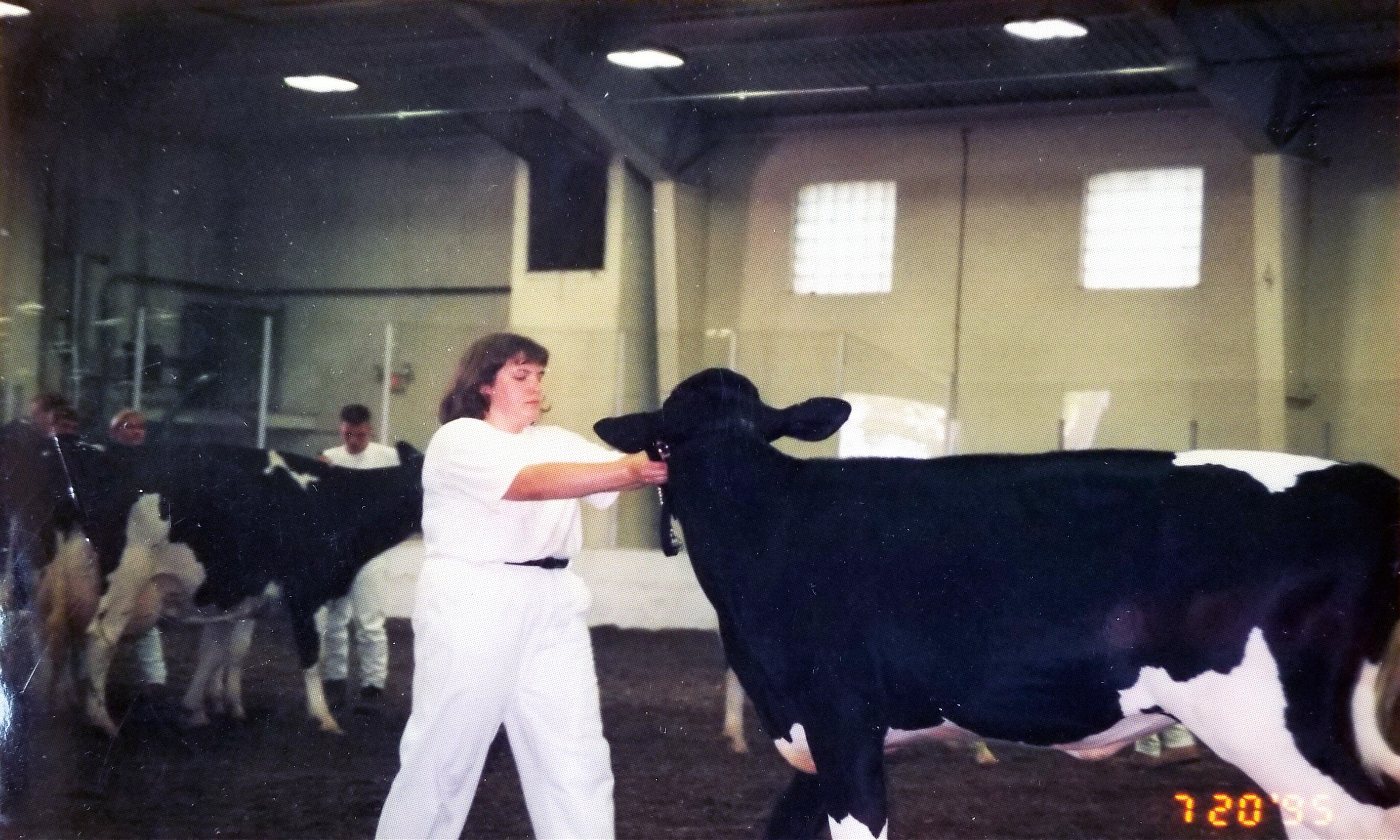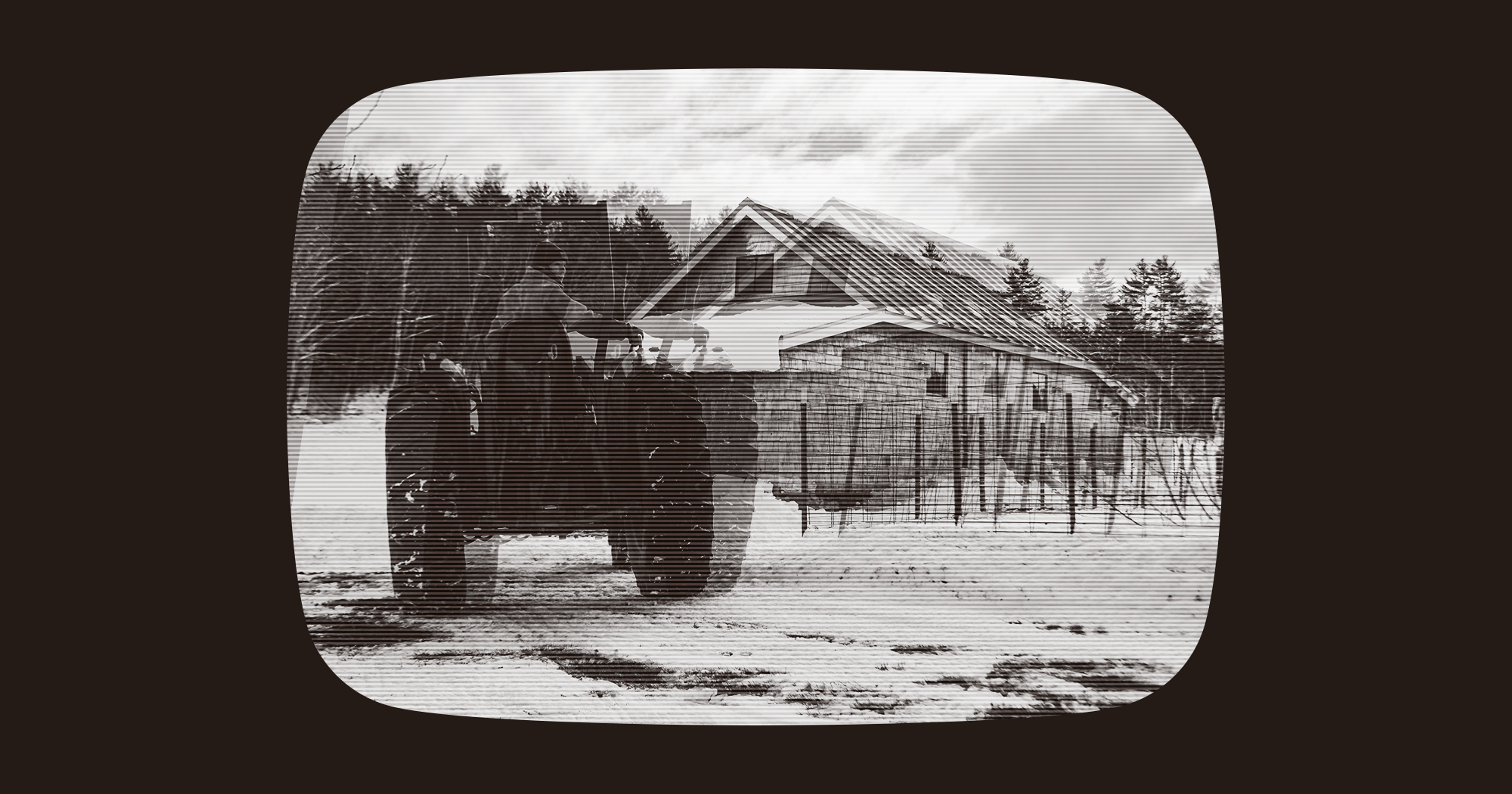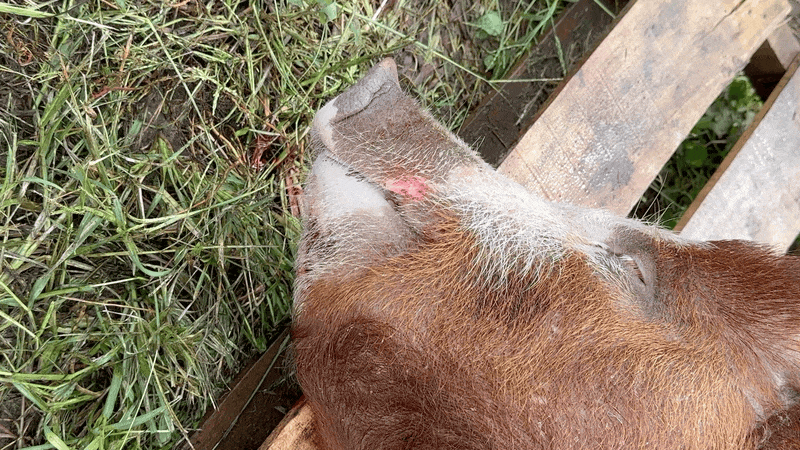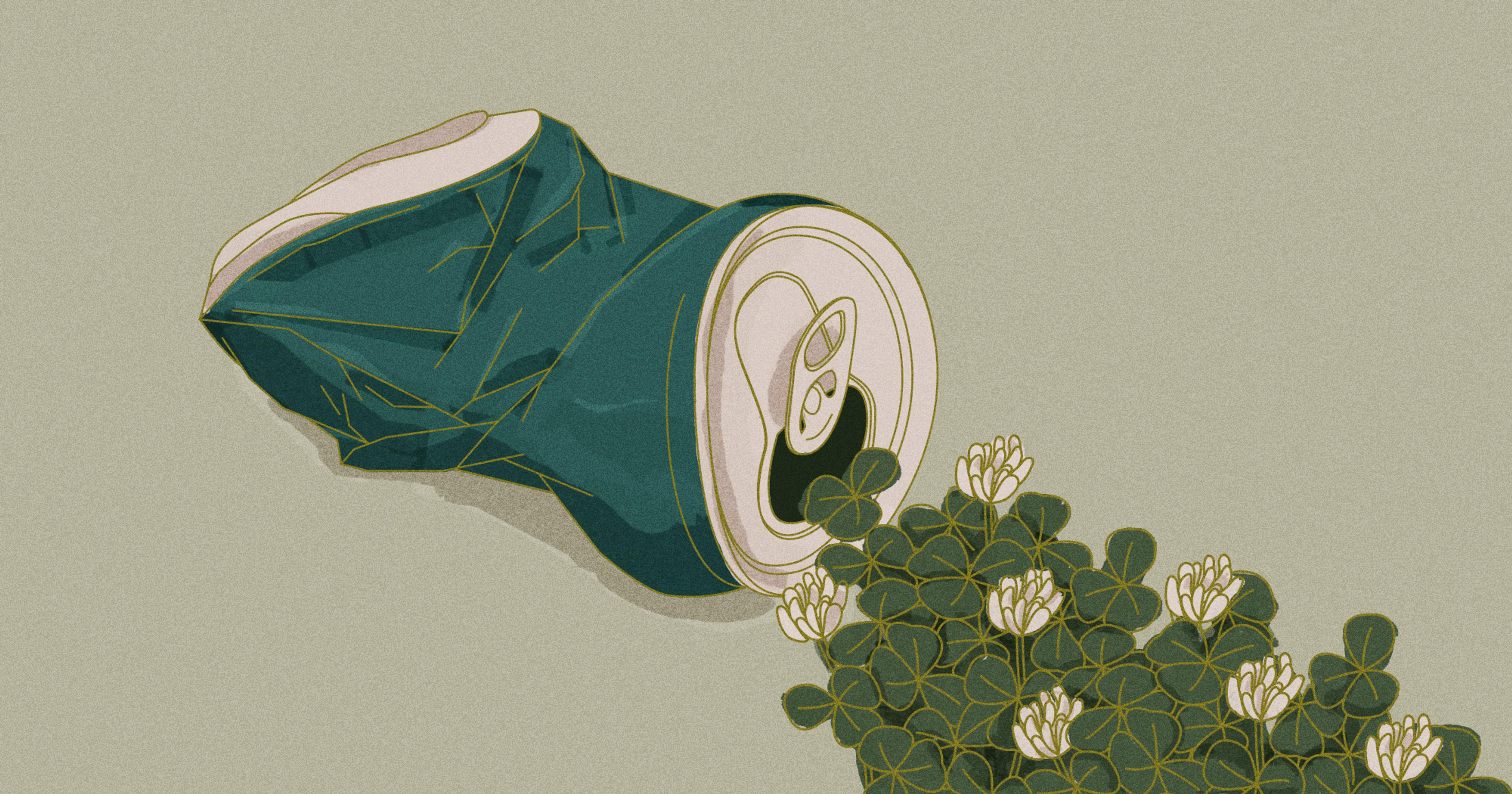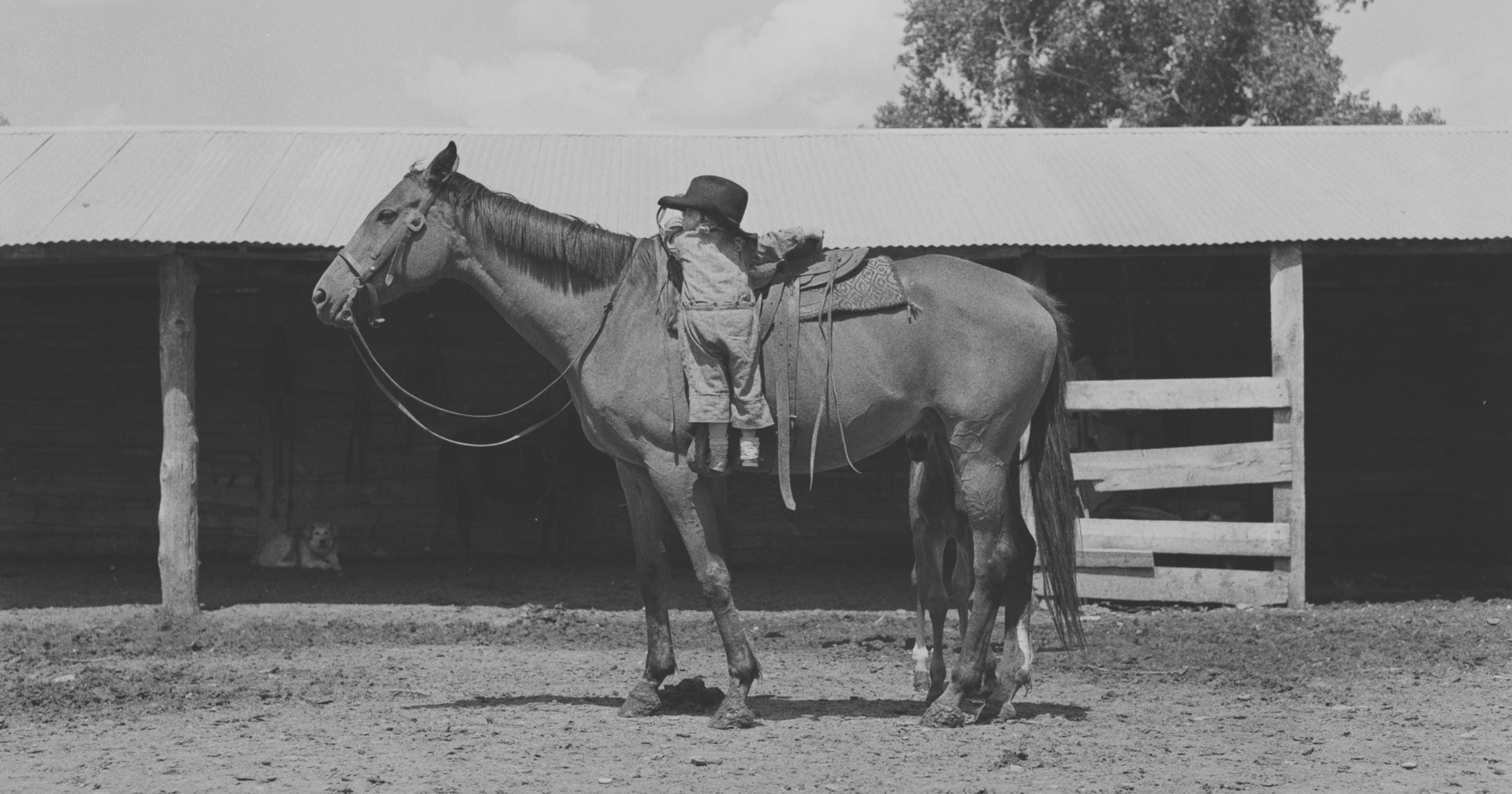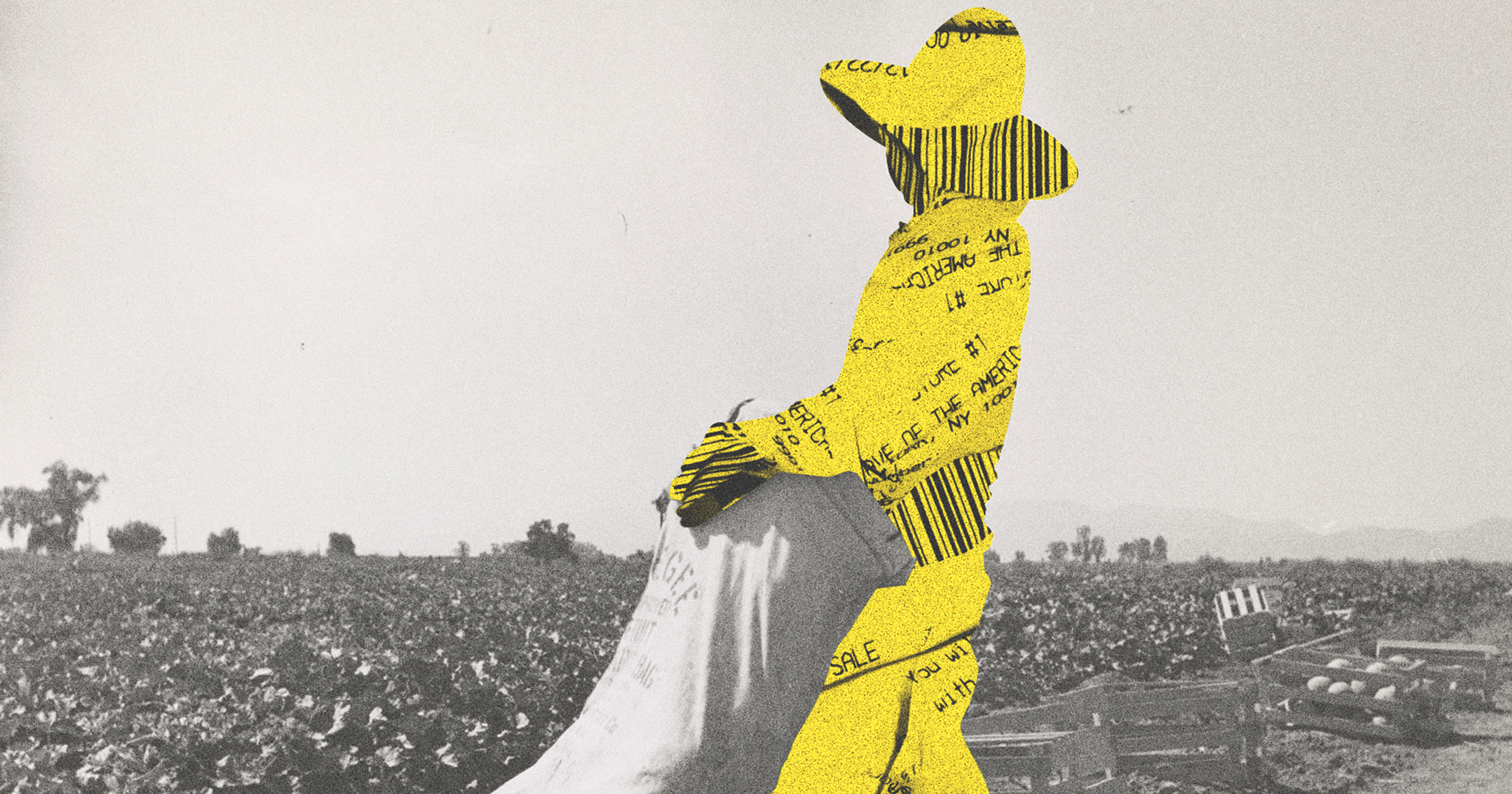When Beth Hoffman and her husband moved from the Bay Area to farm sustainably in rural Iowa, they tried some things their neighbors had never seen. Did it ruffle any feathers?
At the far end of the large white room sat the casket, my father-in-law Leroy inside, pale as a literal ghost, a man who would have turned 91 on this day. At the other end of the room was a table, shiny Happy Birthday balloons bobbing in the dim light, refreshments poured and plated. John, my husband, and his sisters had given the ok for balloons at the visitation — it seemed innocent enough to “celebrate” Leroy’s birth as well as his death.
A cake with Leroy’s face on it (the kind digitally created from a photo and laid out as frosting on a cake) had been given the thumbs down. Yet there it was beside the balloons, someone having missed the memo forbidding the cake. The hushed, reverent crowd circled back one by one and two by two after visiting with the body and cut a slice, enjoying a piece of his shirt or the background, not a single one daring to eat the dead man’s face.
There were maybe 100 or more who attended the viewing. My stepsons flew in from the Bay Area and many of John’s cousins arrived from around the state and the region. And of course, there were neighbors, those who had lived nearby or gone to church with Leroy for at least part of his 91 years. Neighbors he had helped when their cows were loose or their equipment broke down; neighbors from whom he bought seeds or loaned a tractor. Neighbors whose parents or grandparents Leroy had paid his last respects to — in much the same manner they were paying to him now.
But some in attendance also came to support John and me, even though we were semi-recent transplants to Iowa. The DeCooks, for example, were now our friends too, people we rely on and who we share meals and crack jokes with. Some of John’s high school friends were there from the big city, as were men who farm on either side of us and went to preschool with John.
At the time of Leroy’s passing last January, we had lived in Iowa for five years, moving back to John’s family farm after decades in the Bay Area. We had transitioned the farm from Leroy’s leadership to ours (a transition I talk about in detail in my book Bet the Farm: The Dollars and Sense of Growing Food in America) and called it Whippoorwill Creek Farm. John had helped take care of the animals as a kid, wandering the nooks and crannies of the creeks and forests of this land for as long as he could remember. I, however, was brand-spanking-new, both to Iowa and rural living. I had reported on food and agriculture for 20 years by the time we moved to Iowa, but I had never lived on a farm.
Suffice it to say that life — and farming — were challenging. We were trying things on the farm that weren’t just new to us and Leroy, they were largely new to the area’s conventional farming community. As a result, there were numerous false starts and giant failures, alongside our wins.
We bought goats and put them to work clearing out invasive weeds, a practice that yielded results almost immediately. We rotated cattle daily at first, then slowed down to every other day or so to give ourselves a break on the excessive labor rotational grazing demanded. We planted an enormous garden to feed ourselves and started to sell the excess. And most recently we built a “Barn-House,” a re-erected 1880s barn turned into a demonstration kitchen and a two-bedroom apartment for people to visit the farm and learn more about it.
As the five years quickly passed, it was clear that — although we were now two exhausted mid-50-year-olds — the land was happy about the transition, as were the animals. Even Leroy had grown accustomed over the years to our new normal, and he seemed impressed with John’s decisions — at least some of them.
But what did the neighbors think, my family, friends, and book readers always wanted to know. How did they react to our grass-finished beef ways, our no-chemical crops, our weed-eating goats? Did the community look at us askew because I came from the city and our farming techniques were so unconventional?
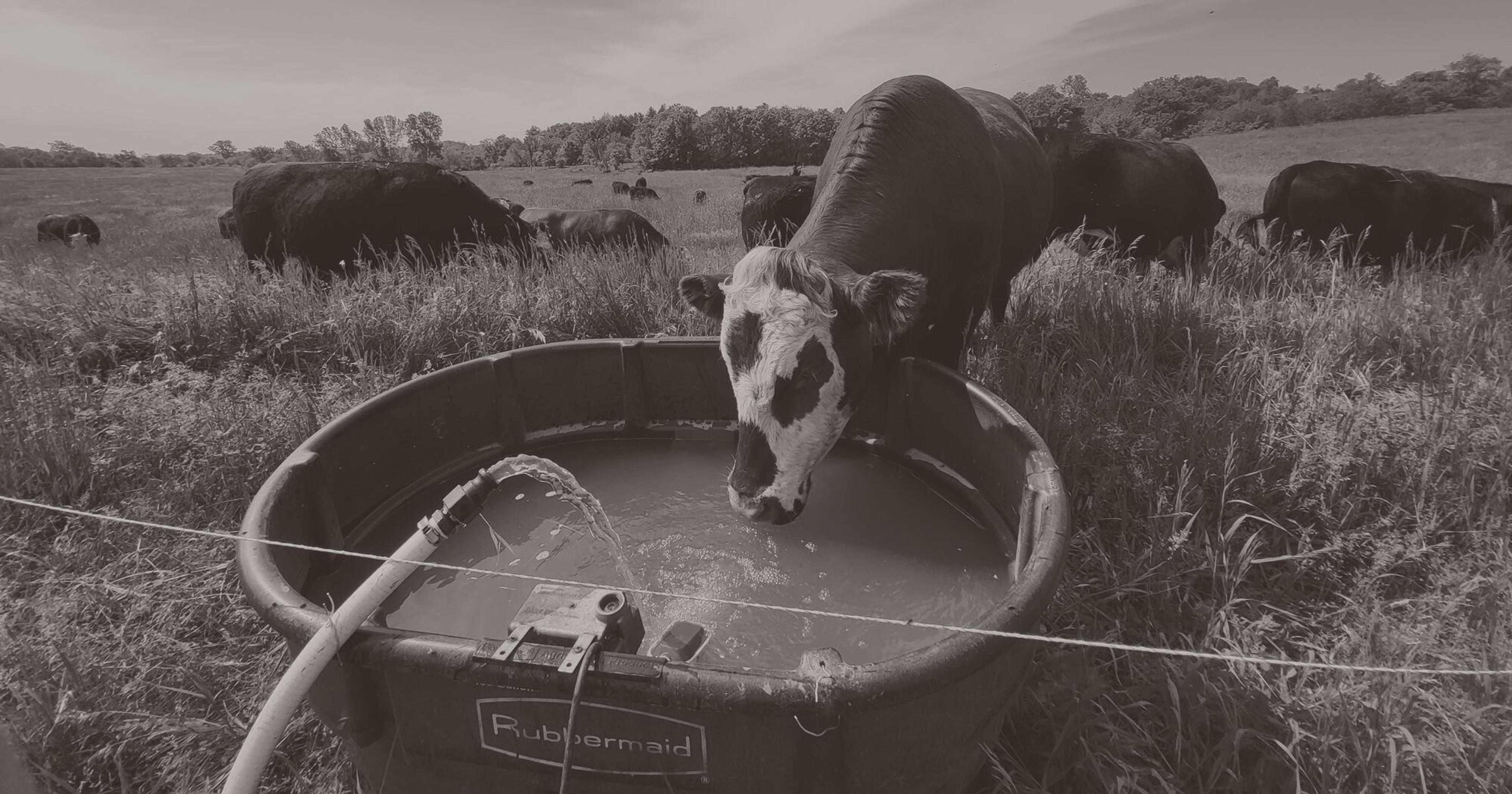
It was a strange set of questions, when I finally sat down to think about it. Never before had anyone asked what my neighbors thought — not when I lived in San Francisco, or New Jersey, or even when I lived in Salt Lake City. When I lived in those places, maybe there was an unspoken assumption that all city dwellers were similar in thought, or at least more accepting of different practices in their midst.
Yet maybe the questions stem from the fact that rural communities are small. Everyone knows everybody else’s business, don’t they? Isn’t it true that farmers are always craning their necks over the fence to see what their neighbors are doing?
“That building you’re building out there, that’s pretty neat,” our neighbor Pat said to us at a bonfire in my sister-in-law’s backyard. We were sitting around the fire with blankets on our laps in the cold of the late fall, the men chatting about corn yields and cattle prices. It had been almost a year since Leroy had passed away. Pat was referring to the construction of our Barn-House. It’s a dang good-looking building, in an area of the country where typically metal and vinyl-sided Morton buildings are built. Add to that the fact that we processed much of the wood on a mobile mill outside of the building … and well, I refer to the building as a man magnet — the guys all seem to have mill-envy.
But it is more than just that. Another neighbor and our postal carrier, David (who John has known since he was in diapers), also commented on the barn a while back, when it was just a skeleton of timbers and roof rafters.
“It is nice to see someone out here who gives a shit,” he told me. “You guys are putting money and energy into this place and I think that’s great,” he commented and walked away quickly so the conversation would not get too mushy.
“It is nice to see someone out here who gives a shit.”
His comment took me by surprise. I had been asked many times by then — by people outside the community, mostly — as to what the neighbors thought of our farming operation, our agricultural practices? I hadn’t considered that the more important part to them was that we were simply here and gave a shit.
To Midwestern families and those who live in most of rural America, the driving question in agriculture today is not about how someone farms, which chemicals are used, or if there should be more conservation programs. The main concern is if anyone will be left farming and living in the area, if there will be any neighbors to care for the land and communities in the future.
The number of U.S. farms has fallen precipitously over time, from a peak of 6.8 million farms in 1935 to 2 million in 2022. But since the 1970s the number of farms has decreased at a very slow rate. In Kentucky for example, in 1988 there were 2,201 farms; in 2002 there were 2,158. What changed dramatically, however, is that no one lives on the farm; most of it is all leased out to farmers who live elsewhere. Fewer and fewer people are actually living on the land, taking care of it and overseeing how it is managed.
“I like having good neighbors and you guys are good neighbors,” Pat told me when I asked him and AJ, his wife, what they think about our farming techniques. “We don’t farm the way you do, but that doesn’t make any difference to us.”

While our legislators spend time creating laws to keep foreign companies — particularly those from China — from owning too much land, the issue is more basic for those who live in rural America. The problem is absentee land ownership, and it doesn’t matter if those owners are from China or Chicago, Rio or St. Louis — what we all need is people. People to live here and to care for the land, to raise animals and crops and kids, and to be a part of a community.
But that doesn’t happen very often anymore. As of 2022, 55 percent of Iowa’s farmland is now owned by someone who does not farm. Who owns the land? Family members who inherited the land or investors, neither of whom have ever lived on a farm, and now lease it out to farmers. Given that a full two-thirds of the state’s farmland is now owned by those over 65 (and 37 percent are over 75) it is likely a problem that will only get worse. Much worse.
In our neck of the woods, land is hard to come by, not because of housing development or because we have great corn-growing land (we do not). Our cash cow is hunting. One of the largest bucks ever shot was felled in our fair county in 2003, and to this day, land for sale is often marketed as hunting ground — not for farming.
A man in his late 60s drove up to our house the other day from a few towns over, explaining that he and his family have hunted for generations on the farm, with Leroy’s blessing. I had met him at the funeral, and he was now checking in with John, the new farm manager, to see if they could hunt next week.
“Oh and I really liked your book,” he added.
“You did? What did you like about it?” I questioned, surprised he had read it.
He told me about how he could relate to John coming back to the farm because he had done the same. He bought his own family’s farm from cousins and siblings upon someone’s death, and now leases the land out to a farmer raising corn and beans. “I am improving the farm for future generations,” he told me.
“It takes crazy to make change.”
“So, do you think we are crazy, the way we are farming?” I asked. “Would you be looking over the fence, thinking that the changes we’ve made are ridiculous?”
“It takes crazy to make change,” he responded.
Like a lot of things these days, agriculture is often presented as a divisive world with two sides of a single coin. You are either a conventional grower or an organic/regenerative/rotational/(fill in the wholesome term of your choice) one, when in fact agriculture is a long, wide continuum.
All farmers make small, incremental changes every year, trying this new seed or that conservation practice. Our neighbor Pat put in his first cover crops last year in areas that are erodible. And David talks about how he wants to raise chickens again because “I don’t know what they feed those chickens in the grocery store.”
With only contract farmers on the land and investors owning it, that kind of incremental change will be impossible to make. How would you know the erodible places on your farm if you don’t witness the erosion? If you don’t drink the water, would you care how polluted it is?
The luncheon at the end of Leroy’s funeral was packed, the church basement full of friends and neighbors eating ham balls and potato salad. I hope I get a chance to know half as many people in this area, I thought to myself. With only a handful of homes still lining our gravel road, the chances are slim. But we are injecting new life into this farm, bringing out young employees and curious visitors.
And, even if I didn’t know it, just the fact that we are here and care about this land is appreciated more than I knew. I may be new here and we may farm differently, but maybe there will be enough people at my funeral to eat a cake too.
